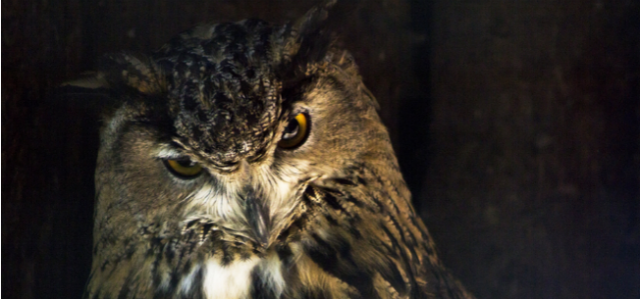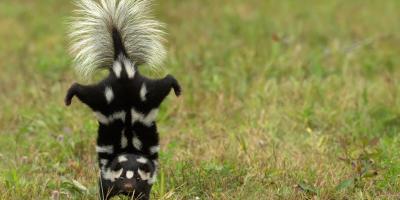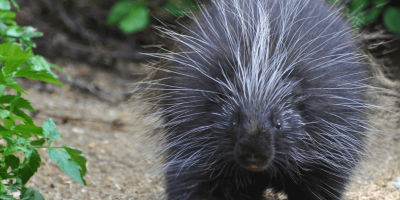Bad, Bad Company: The Dangerous Wildlife That Rodents Attract

Pest control is rarely as narrow as a single issue. When it comes to keeping your home free from unwanted invaders, the issue often comes from the rules of nature itself - the food chain.
That’s because many common household pests - and rodents, in particular - are a favorite food source for a few of the nastiest “second level” pests around. As long as you have mice hanging around, your home will look like an open buffet to some larger, more troublesome critters - and that can easily become a disaster waiting to happen.
Here’s a look at some of the most common - and, often, most dangerous - wildlife that may be tempted to visit your home or property looking to enjoy a rodent feast.
Snakes
Rodents make up a large portion of a snake’s diet, and several species will happily come calling in your yard, under a wood or rock pile, and around your patio when there are rodents near.
Make sure to check these areas fairly regularly to scare off any would-be nesters, and keep your grass cut short during the warmer months to discourage any snakes from hiding out. Lastly, of course, keep your space rodent-free - with little or no food source, snakes will have to look for somewhere else to grab a bite.
Wild Canines and Felines
If you already have a cat or dog as a pet, chances are they’re going to let you know when mice start getting comfortable in your home. Cats will almost always instinctively chase and eat mice, whereas domesticated dogs have been known to simply chase and play. Wild canines and felines, however - like foxes, coyotes, and lynxes - often rely on mice for survival, and won’t be quite so coy about chasing down a meal.
Having mice scurrying around your yard or near your house can encourage these mid-sized mammals to prowl around, looking for a quick bite. These predators can cause issues for your own pets and those of your neighbors, and can cause additional trouble of their own once they’ve become accustomed to an area. Keep your space rodent-free and these wild canines and felines from making your yard a feeding ground.
Owls & Hawks
Birds of prey like owls and hawks don’t just love to eat mice - they’re specifically adapted to do so, with superior eyesight that has evolved to pick out the tiniest mouse hiding in tall grass from hundreds of feet in the air. That means they can take their time waiting for their next meal while keeping a close watch on an area with rodent activity. - and sometimes, they don’t even mind grabbing a small pet while they’re waiting.
Birds of prey are particularly patient when it comes to stalking prey, and they aren’t afraid to set up a nest and stick around if food seems plentiful. Discourage them from settling down by keeping their supply of rodents to a minimum.
Fisher Cats
If you’re not familiar with the forests of New England, lower Canada, or the Pacific coast, you may not know much about fisher cats - but for those in their range, this furious scavenger is all too familiar.
Ironically, the fisher cat does not have a taste for fish. This large member of the weasel family is a notoriously aggressive and persistent predator, feeding on a wide range of small mammals - including rodents. How tough is the fisher cat? It’s one of the few predators of the porcupine - so clearly, a mouse simply doesn’t stand a chance. Best not to give a fisher cat anything to look forward to when it hits your yard.
Raccoons
Notorious for their love of knocking down trash cans in search of snacks, raccoons are already on many homeowners’ watch lists as rubbish burglars, food thieves and pet-antagonizers. But in reality, this only speaks to the fact that raccoons are anything but picky eaters - and when last night’s leftovers run out, they’re not afraid to make a snack out of a squirrel, a small bird, or even a mouse.
This is especially true of raccoons living in urban areas, where access to other prey is limited. City raccoons tend to rely more on trash and small rodents for their diet, and will actively seek out mice and rats when other pickings are slim. Plus, they can live for around 20 years in the wild - meaning once you’ve got a problem, it can be very hard to correct. Keeping mice and rats from tempting an unwanted raccoon visitor is the easiest first step.
Bears
We typically think of bears as huge, lumbering predators scooping salmon out of a river. This is definitely an accurate, if incomplete, picture of a bear’s diet, which is actually highly varied depending on the time of year. When the salmon aren’t running, bears will eat a wide variety of foods - including young game like deer and moose, wild nuts and fruits, and even insects. This is especially true in the lead-up to hibernation, when a bear is looking to eat huge amounts before the big sleep - and many times, mice offer an excellent addition to this diet.
Granted, bears usually prefer to avoid humans and won’t be as likely to wander onto your property looking for a bite to eat. But experts do warn that bears who have become accustomed to humans will come looking for food, and having a regular supply of rodents to pick from at your home can encourage a bear to stick around. This is dangerous for obvious reasons, and it’s best not to give a bear the temptation to come visiting in the first place.
Pest Management From The Ground Up With JP Pest Services
At JP Pest Services, we offer our customers free estimates and help determine the extent of their rodent problem as well as the next steps needed to control the problem. Over nine decades of service, we’ve developed highly effective rodent control programs, involving locating and sealing all available entry points while putting comprehensive rodent control techniques in place to ensure ongoing effectiveness.
Whether you’re worried about your rodent problem becoming a smorgasbord for second-level pests or you’re simply concerned about keeping rodents from reaching your home in the first place, our pest management experts can keep your home secured from unwelcome invaders.
Dealing with rodents in your home? JP Pest Services can help:



